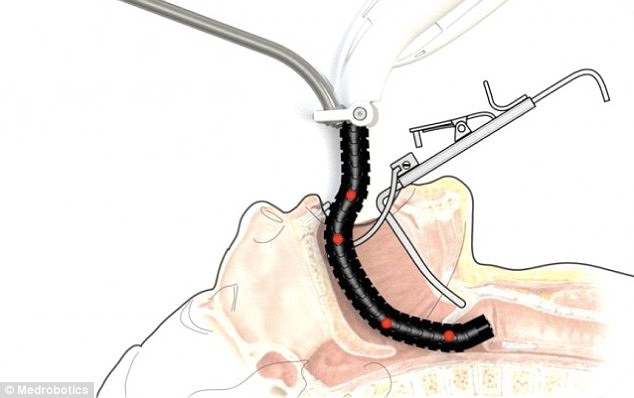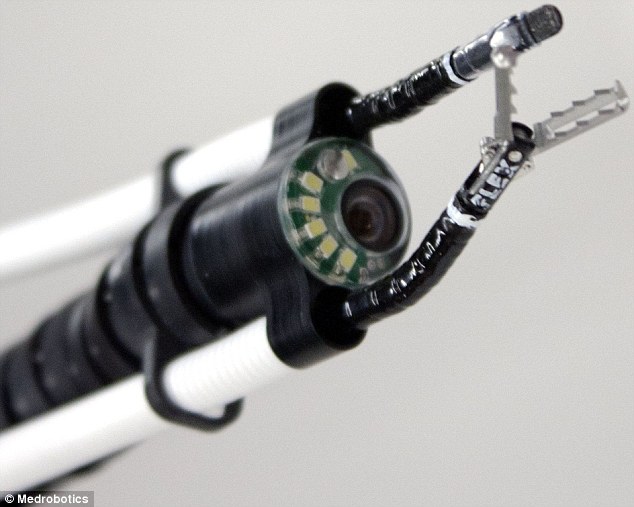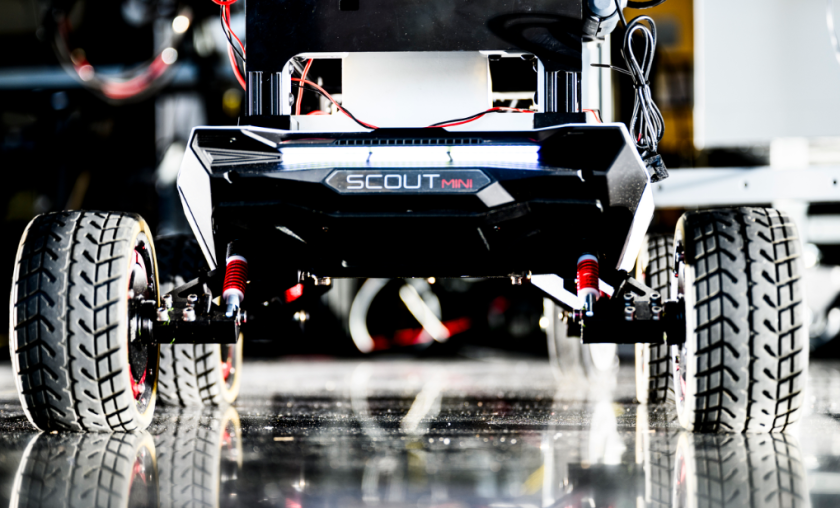Robot assisted surgeries are not new and is being widely used by the surgeons to perform minimal invasive surgeries with great precision. To further extend the benefits of robot assisted minimally invasive surgery such as quicker recovery and shorter hospital stay, Flex system has been designed. This will allow more patients to undergo minimal invasive surgeries, thus cutting down the waiting time in hospitals.
The innovative Flex system is inspired from the research work led by Howie Choset, who is a Professor of Robotics at Carnegie Mellon University, Pennsylvania, which has been already used in the nuclear power plant to reach pipes and other congested place to do repair work. Medrobotics Corp a New England based company, where they hope the bot will be used in hospitals, is developing the medical version for marketing.
Flex system is a flexible endoscopic system that looks like a robotic snake and is unique as it does not require incisions to be made for its entrance, rather it uses natural opening like the mouth and passing through the patient’s throat to reach the desired body part. Researchers believe that the flexible medical droid has the potential to revolutionize surgeries and help surgeons perform intricate surgeries inside the human body. And with this endoscopic system, provide surgeons with an opportunity to reach human body parts that are unmanageable to access using other available methods.
As per president and CEO of Medrobotics, Dr Samuel Straface, that the robots assisted flex system will help the surgeons to analyze and operate at anatomical locations that were so far considered as challenging to reach. The Flex system is also capable of using specially designed flexible surgical tools to operate.
Starting with operating in the oropharynx (the region between the mouth and the top of the throat) and endolarynx (region within the larynx) to remove throat tumors, however, in the future, researchers suggest the flexible endoscopic system can be used in performing complicated procedures such as head and heart surgeries.
The robotic flex system after being inserted through the mouth can be controlled using a joystick, which easily maneuvers the bot around organs and other hurdles. A high definition camera is mounted on the head of the robot, surrounded by six LED lights, which enable the surgeons to see where the robotic snake is heading. The camera has ports on either side which can hold surgical tools for the procedures.
The flexible body of the snake robot consists of linked segments, based on follow the leader method which enables it to bend according to anatomical curves while remaining rigid to avoid from bumping into something while moving forward in the body. The sleek design enables the robot to perform surgeries within the confined spaces of the body.
The use of snake robot is not confined till surgeries, nuclear plants or helping firefighters to view beneath the collapsed building, the researchers from Sintef Research Institute in Trondheim, Norway plan to send the bot to Mars. They believe that the bot can be used to assemble samples from hostile Mar’s surface that are difficult for a rover to reach. European Space Agency (Esa) is working to provide the snake bot with wheels to help it move forward, even on flat surfaces and thus enabling the traditional rover with enhanced mobility and collecting more valuable sample for the research.





